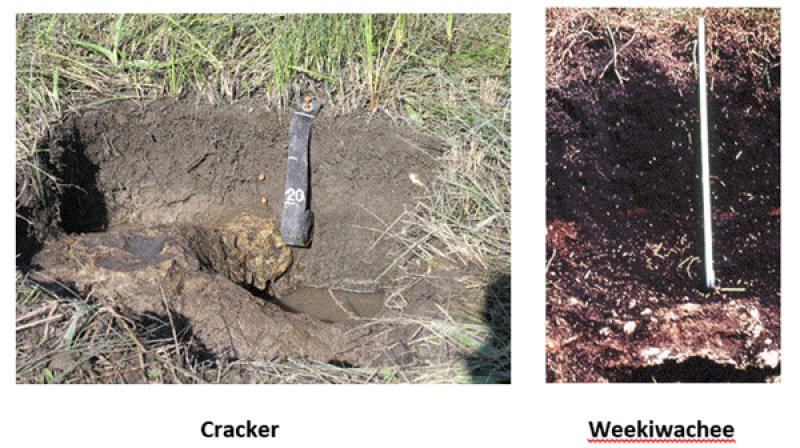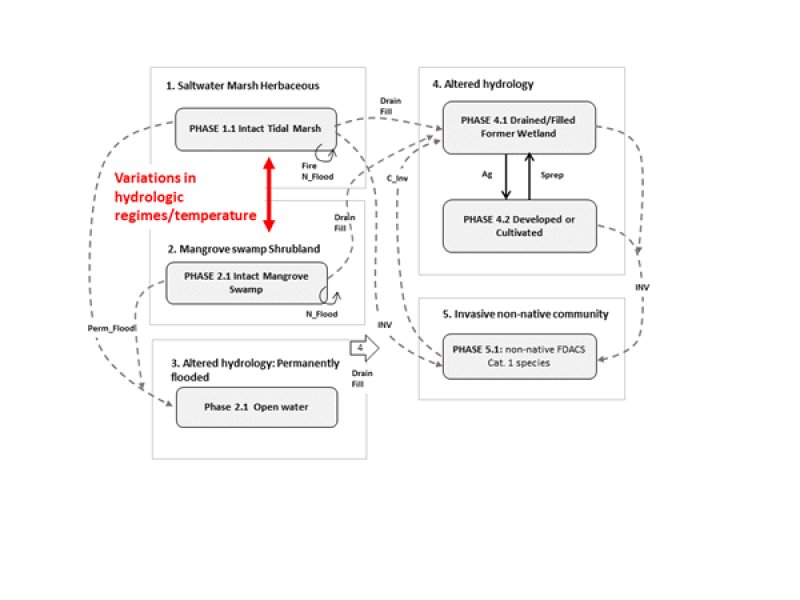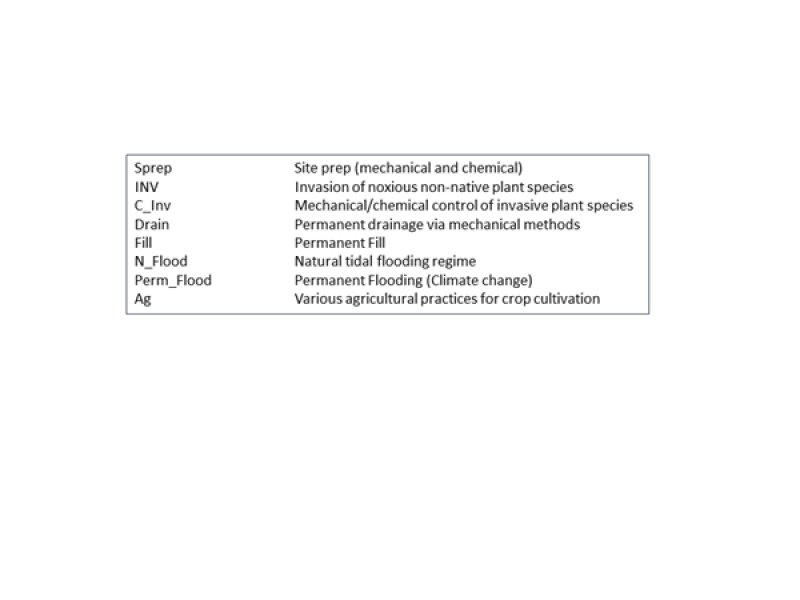
Natural Resources
Conservation Service
Ecological site R154XX017FL
Wet Saline Marshes And Swamps
Last updated: 3/24/2025
Accessed: 12/07/2025
General information
Provisional. A provisional ecological site description has undergone quality control and quality assurance review. It contains a working state and transition model and enough information to identify the ecological site.
MLRA notes
Major Land Resource Area (MLRA): 154X–South-Central Florida Ridge
This MLRA makes up about 7,209 square miles (18,672 square kilometers) and is entirely in Florida. MLRA 154 contains a series of parallel, prominent sandy ridges of Pleistocene marine origin, including the Brooksville and Mount Dora Ridges. These north to south oriented parallel ridges are interspersed with more low lying physiographic provinces, including: upland hills, plains, valleys and gaps (Puri and Vernon 1964).
Many of the soils in this sub-unit are Pleistocene or Holocene sands that are underlain with older, loamy Pliocene marine sediments (Cypresshead formation) or the clayey Miocene marine sediments (Hawthorne formation). A combination of marine depositional events and the dissolution of underlying limestone (karst geology) is responsible for surficial topography throughout Peninsular Florida.
Classification relationships
All portions of the geographical range of this site falls under the following ecological / land classifications including:
-Environmental Protection Agency’s Level 3 and 4 Ecoregions of Florida: 75 Southern Coastal Plain; 75c Central Florida Ridges and Uplands (Griffith, G. E., Omernik, J. M., & Pierson, S. M., 2013)
-Florida Natural Area Inventory, 2010 Edition: Mangrove Swamp, Salt Marsh (FNAI, 2010)
Ecological site concept
Map units of this site occur exclusively in the Coastal Swamp physiographic unit of Coastal West Central Florida. The central concept of the Wet Saline Marshes and Swamps is shallow to very deep, very poorly drained, sandy or loamy, saline soils that have a muck or mucky surface layer and bedrock within 6 to 40 inches. Map unit components occur on flat landscapes (slopes <1%). Soil series include the shallow Cracker and Lacoochee soils, the moderately deep Homosassa and Weekiwachee soils, and the deep Tidewater soils and Durbin soils. Due to changes in MLRA boundary extent, this site will need to be reevaluated.
Associated sites
| F154XA016FL |
Wet Mineral Alluvial Forest And Marshlands These sites are very poorly drained alluvial concepts that will occur in mineral soils and will differ in physiographic positions and affect the types of vegetation and management strategies |
|---|---|
| F154XA013FL |
Histic Alluvial Forests These are very poorly drained alluvial concepts that will occur in organic soils, and will differ in physiographic positions, affect the types of vegetation and management strategies |
| F154XA014FL |
Histic Wetland Depressions These sites are very poorly drained depressional concepts that will occur on organic soils, resulting in different types and amounts of vegetation as well as management strategies |
| F154XA015FL |
Mineral Depressional Wetlands These are very poorly drained depressional concepts that will occur in mineral soils and will differ in physiographic positions, affect the types of vegetation and management strategies |
Similar sites
| R155XY020FL |
Haline Intertidal Marshes and Swamps This site is found within MLRA 155, which is more representative of lowland sites. This site has a greater latitudinal gradient and will have a greater variation in community composition. |
|---|
Table 1. Dominant plant species
| Tree |
Not specified |
|---|---|
| Shrub |
(1) Avicennia germinans |
| Herbaceous |
(1) Spartina alterniflora |
Click on box and path labels to scroll to the respective text.


